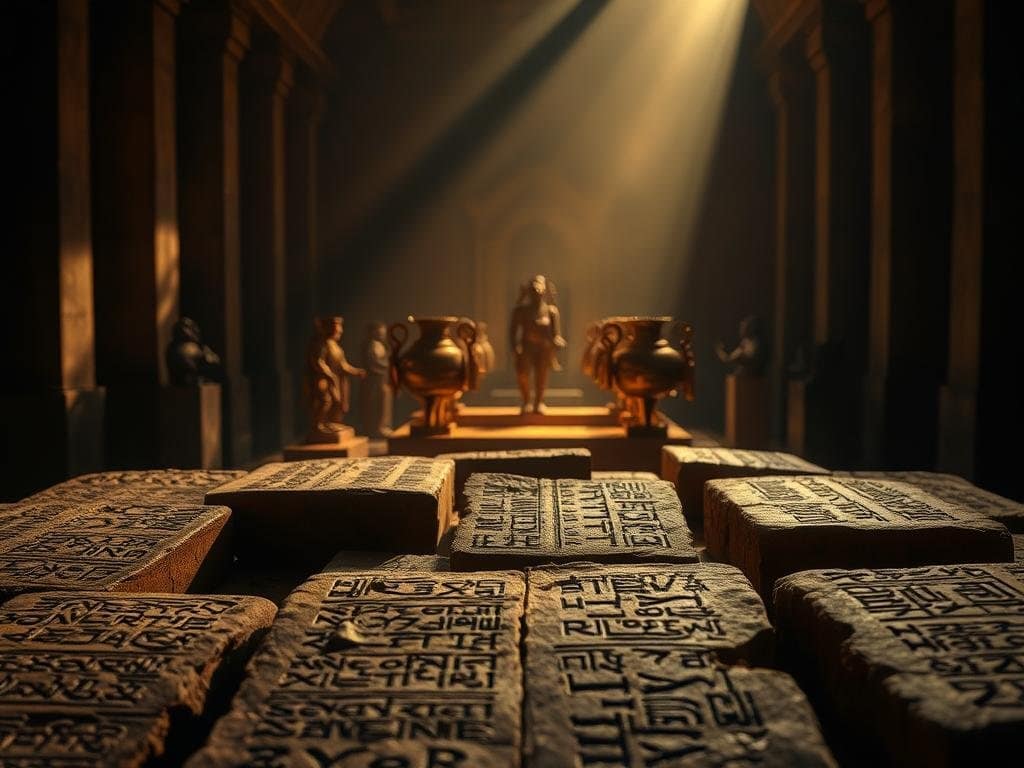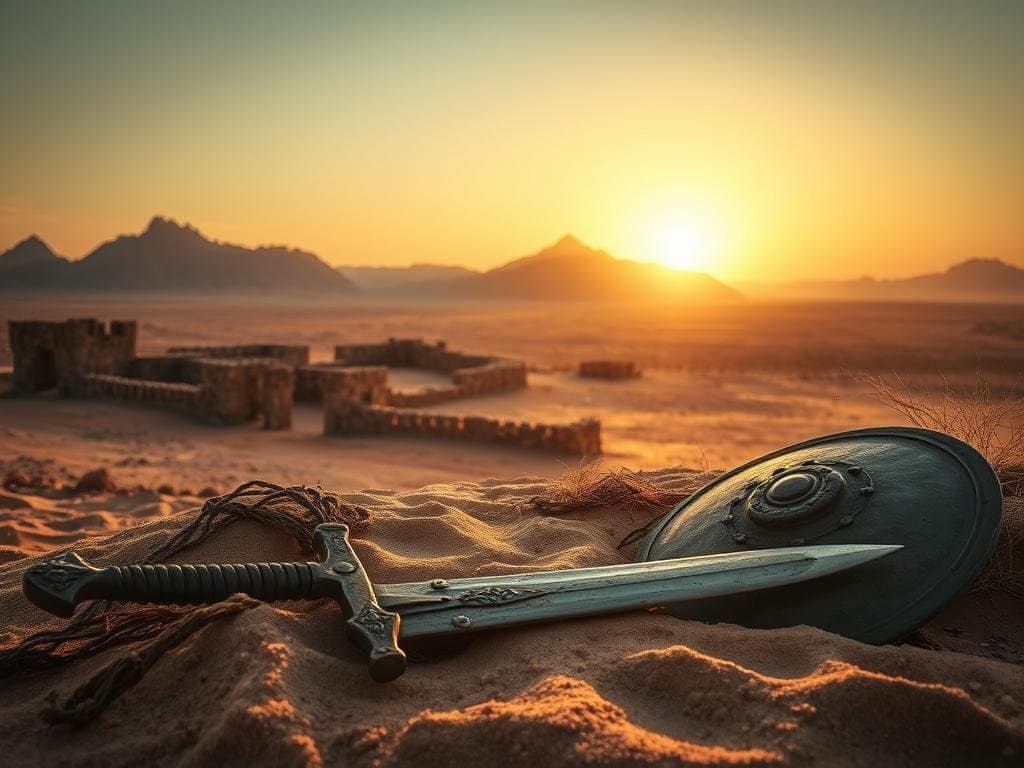Exodus Uncovered: Exploring God’s Plan for Redemption
Exodus Uncovered: Have you ever wondered how ancient stories connect to real-world discoveries?
The story of a tribe’s journey from slavery to freedom is more than just a biblical narrative. It’s a tale that intertwines faith, history, and archaeology, offering profound insights into God’s plan for redemption.
Recent excavations have uncovered fascinating artifacts, like a bronze sword bearing the name of a pharaoh.
These findings bridge the gap between ancient texts and tangible evidence, bringing the past to life. Archaeologists and historians are piecing together clues that reveal the time and years when these events unfolded.
As you explore this journey, you’ll see how God’s faithfulness shines through even in the darkest moments.
From the oppression of a group to their miraculous deliverance, the story of redemption is as relevant today as it was thousands of years ago.
Dive in and discover how history and faith intersect in ways that inspire and amaze.
The Historical Context and Biblical Connections
The Bible’s narratives often intersect with real-world archaeological findings. These connections help us understand the story of ancient tribes and their journeys.
One of the most fascinating links is between the biblical account of Moses and the Egyptian pharaoh Ramesses II.

Biblical Narratives and Ramesses II
Ramesses II, a powerful pharaoh, ruled Egypt during a time that aligns with the biblical Exodus. Scholars have debated whether he was the pharaoh mentioned in the text.
A decayed bronze sword bearing his name was discovered at Tell Al-Abqain, adding weight to this theory.
This artifact provides a tangible link between scripture and history. It’s a reminder that ancient storys are often rooted in real events.
The discovery has sparked new discussions among scholars about the years when these events unfolded.
Ancient Architectural Insights and Excavation Discoveries
Excavations have revealed mudbrick structures, military barracks, and storage units. These findings shed light on life in ancient Egypt.
Archaeologists have uncovered relics that match descriptions in biblical texts.
For example, the discovery of military barracks aligns with the biblical account of Israelite enslavement.
These insights help us piece together the story of a tribe’s journey from oppression to freedom. The city of Tell Al-Abqain has become a key site for understanding this period.
These discoveries bridge the gap between historical accounts and modern evidence. They remind us that archaeology is a powerful tool for interpreting the past.
By studying these artifacts, we gain a clearer picture of ancient life and its connection to biblical narratives.
Inside Exodus Uncovered: Archaeological and Scriptural Evidence
What if ancient artifacts could speak? Their whispers reveal a story of faith and history. From military relics to ceremonial items, these discoveries connect the dots between scripture and science. Let’s dive into the evidence that brings the past to life.

Unearthing Artifacts and Military Relics
Archaeologists have uncovered fascinating items that align with biblical accounts. For example, a bronze sword bearing the name of a pharaoh was found at Tell Al-Abqain.
This relic ties directly to the time of the Exodus, offering tangible proof of ancient events.
Military barracks and storage units have also been discovered. These structures match descriptions of Israelite enslavement in biblical texts.
Such findings help us understand the daily lives of ancient tribes and their struggles for freedom.
Documentary Revelations and Expert Perspectives
Documentaries like “Exodus Revealed” provide a deeper look into these discoveries. They combine firsthand excavation reports with expert analysis.
Scholars and archaeologists interpret the significance of these relics, offering fresh insights into ancient narratives.
“Every artifact is a piece of the puzzle, helping us reconstruct the past,” says a leading scholar.
Traveler testimonials add another layer to the story. Many recount personal revelations during their journeys, connecting emotionally with the story of redemption.
These experiences highlight the enduring impact of these ancient events.
By blending physical evidence with personal accounts, we gain a richer understanding of history. These discoveries remind us that the past is not just a collection of dates and facts—it’s a living, breathing story that continues to inspire.
Modern Travel Experiences and Cultural Insights
Exploring ancient cultures through modern travel offers a unique blend of history and adventure. You’ll walk in the footsteps of an ancient tribe, uncovering stories that have shaped civilizations.
From the bustling markets of Uzbekistan to the serene mosques of Samarkand, every step reveals a new layer of the past.
Traveler Reviews and Group Leader Impressions
Travelers like Zoe Barlow and Dave Newport have shared their experiences, highlighting the role of group leaders like Dilshod and Tahir.
These leaders bring history to life with their extensive knowledge and passion. Their insights make the journey more than just a trip—it’s an immersive experience.
One traveler noted, “Our group leader’s stories transformed the time of the Exodus into something tangible.” This connection between past and present is what makes these tours unforgettable.
Local Encounters and Insider Tips
Meeting locals adds depth to your journey. From artisans crafting traditional artifacts to guides sharing hidden gems, these encounters enrich your understanding of the culture.
Insider tips, like carrying local currency and dressing modestly for mosques, ensure a smooth and respectful experience.
Here are some practical tips for your trip:
- Bring a mix of US Dollars and Uzbek Som for purchases.
- Dress modestly when visiting religious sites.
- Stay hydrated and carry rehydration salts, as some travelers report illness.
These small details make a big difference, helping you fully enjoy the picture of ancient life that unfolds before you.
FAQ
What is the connection between biblical narratives and Ramesses II?
Ramesses II is often linked to the biblical story of Exodus. Scholars believe he may have been the pharaoh during the time of Moses, though this is still debated. His reign and the events described in the Bible share historical parallels.
What kind of artifacts have been discovered in excavations related to Exodus?
Excavations have uncovered military relics, pottery, and tools from the era. These artifacts provide insights into the daily life and culture of the time, helping to piece together the historical context of the biblical story.
How do modern documentaries contribute to our understanding of Exodus?
Documentaries often feature expert perspectives and archaeological findings. They bring the story to life by combining scriptural evidence with historical research, making it more accessible and engaging for viewers.
What can travelers expect when visiting sites related to Exodus?
Travelers can explore ancient cities, view excavation sites, and learn from local guides. These experiences offer a deeper understanding of the cultural and historical significance of the Exodus story.
Are there any insider tips for visiting these historical sites?
Yes, it’s best to visit during cooler months and hire knowledgeable guides. They can provide unique insights and help you navigate the sites more effectively, enriching your travel experience.
How do group leaders enhance the travel experience?
Group leaders often share detailed knowledge and personal stories. Their expertise helps travelers connect more deeply with the history and culture of the locations they visit.







